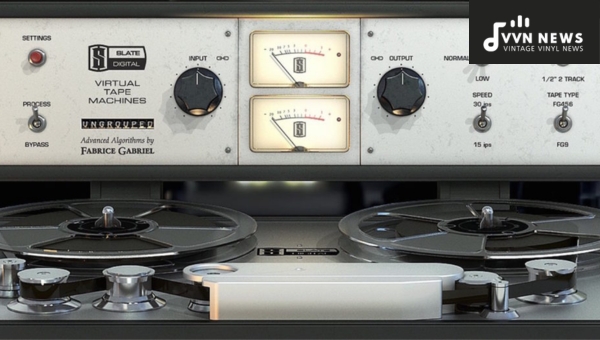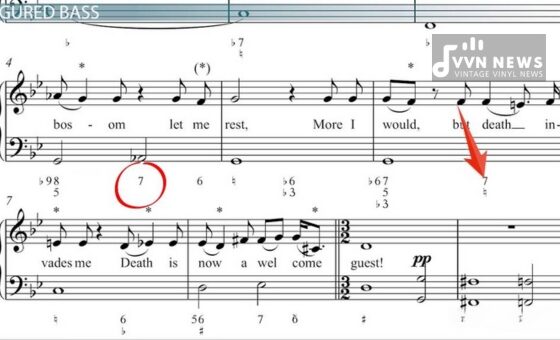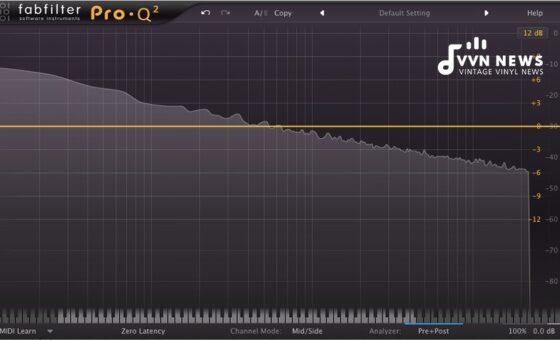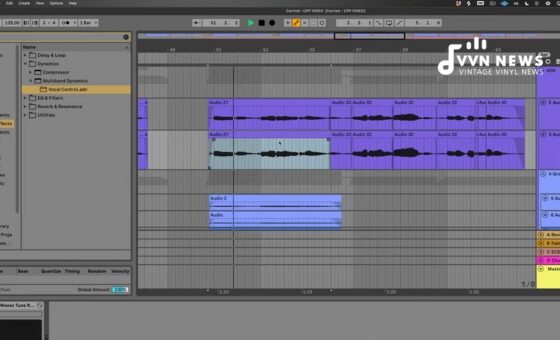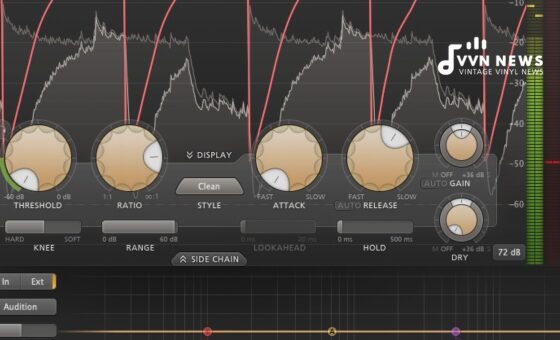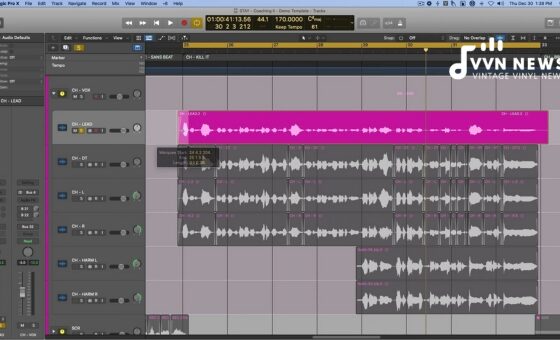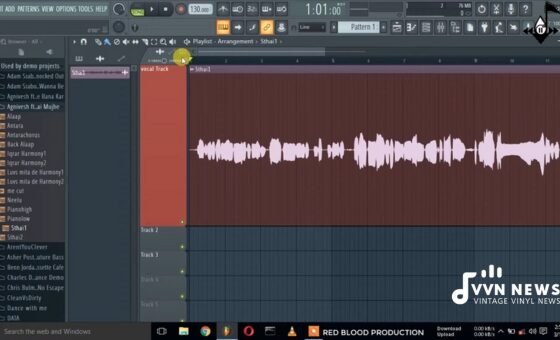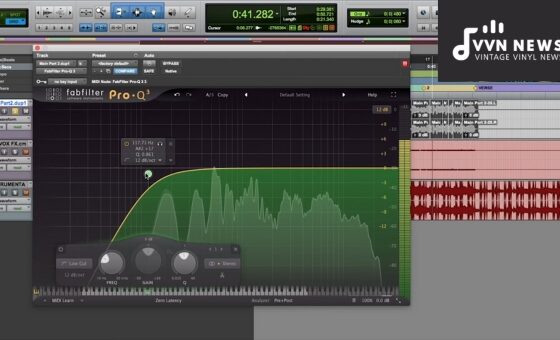If you’re into music production like I am, chances are, you’ve come across the terms ‘Tape Saturation and Plugins.’ These two phrases could raise your eyebrows if you’re a beginner navigating the whole tune-making process.
These topics can also be exciting to discuss in depth for those with already established roots in the field. So let’s start cracking on understanding what is tape saturation & best saturation plugins.
Tape saturation, to put it simply, was an unintentional phenomenon that later turned into an intentional part of music production. Musicians and producers mined it for its rich sonic texture that adds a certain grit and warmth to recordings.
Saturation plugins are digital adaptations of this process designed to help musicians achieve that well-loved vintage sound without an actual reel-to-reel machine.
What is Tape Saturation?
Tape saturation is a terminology that harks back to the era of analog recording. It is essentially an audible effect that occurs when magnetic tape reaches its threshold or maximum recording level.
Traditionally, this first became evident when using tape recorders – the more you’d push the volume while recording, beyond a certain point, the tape couldn’t hold any more signals.
As a result, distortion would be introduced, creating a denser and ‘warmer’ sound due to the added overtones.
The Concept of Tape Saturation
The concept of tape saturation is deeply tied with how sound was recorded before digital technology came to be.
When music was recorded on analog magnetic tape, pushing the input signal could influence the output’s sonic characteristics significantly.
Tape saturation hence implies that unique sonic coloration which comes into play once we tread into this high input territory.
Adding Color and Warmth
Analog tape machines are known for their ability to add depth and warmth to an otherwise dry and clinical audio signal.
They saturate harmonics by generating subtle and pleasing distortions, thereby making elements in your mix fuller and cohesive with a certain color, which can give your track an extra edge.
In essence, tape saturation plays with audio distortions, not the kind tending towards disruption but those contributing towards adding warm resonances and smoother textures that musicians commonly refer to as ‘analog warmth.’
Also Read: 20 Best Compressor Pedals In 2024 [Achieve Tone Control Mastery]
Key Characteristics of Tape Saturation
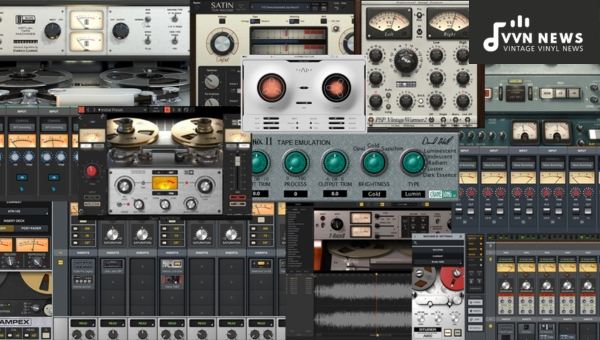
Tape saturation creates a distinctly pleasing sonic quality by introducing some unique characteristics to the audio signal; non-linear distortion and frequency response changes are among them. Let’s understand these terms.
Non-linear Distortion and Harmonic Generation
Whenever an audio signal is passed through any analog device, including a tape machine, a process known as non-linear distortion occurs.
This form of distortion adds harmonics or overtones to the original signal, creating what our ears perceive as ‘warmth.’
Pinning this ‘warmth’ down scientifically, it basically relates to the addition of even and odd harmonic overtones that our ears find musically pleasing.
Frequency Response Changes Brought by Saturation
Saturation also introduces changes in the frequency response of an audio recording.
The typical impact on frequency response can be described as a small boost in the low frequencies, also known as low-end fattening, coupled with gentle high-frequency compression, also called high-end smoothing.
This dual process gives tape-saturated recordings their characteristic warmth and cohesion.
Types of Saturation Plugins
There’s a plethora of saturation plugins available on the market today, designed to emulate different types of hardware and lend unique characteristics to your audio tracks.
Key categories include Tube Emulation, Tape Simulation, and Transistor Distortion.
Tube Emulation Plugins
These plugins replicate the distinctive warmth and fullness created by tube amps. Works brilliantly with genres like rock and blues that call for a lusher, richer tone. User-favorite tube emulation plugins include Waves Audio’s Abbey Road Vinyl or Klanghelm’s SDRR.
Tape Simulation Plugins
Intended to mimic the unmistakable warmth of classic analog tape recordings. These are versatile and work wonderfully with a broad spectrum of musical genres. Tastefully deploying tape simulation plugins can add mild harmonic distortion for enhancing presence in any mix. Izotope’s Ozone 9 Vintage Tape or Waves J37 are top contenders here.
Also Read: 20 Best Classical Guitars [Top Picks For A Beautiful Sound]
Transistor Distortion Plugins
These aim to copy different forms of solid-state distortions that were usually introduced by transistor amplifiers, ideal for aggressive musical styles like rock or metal.
Go-to choices in this category often include SoundToys’ Decapitator and Native Instruments’ Driver.
So, if you want that nostalgic touch or an extra punch in your tracks – identify your genre, pick your saturation plugin type accordingly, and get creating.
Emulating Tape Saturation with Plugins
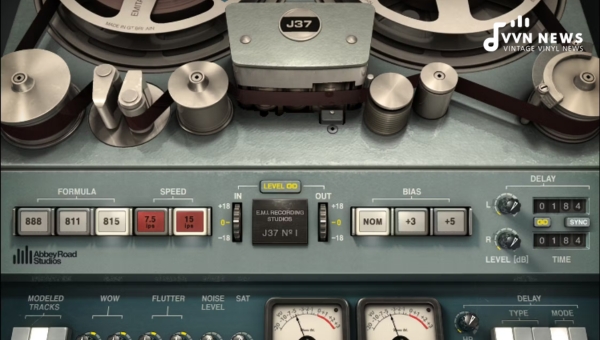
In these bright days of digital audio, tape machines are probably not within everyone’s reach or suitability.
This is exactly where plugins come into play. Saturation plugins came as a result of the digital age, providing tools to achieve and replicate that warm analog sound without needing access to original analog hardware.
Potent Tools for Mixing
These plugins are mightily potent tools in your digital audio workstations (DAWs), able to spit out everything from subtle, nearly transparent saturation to full-blown gritty distortion.
Used right, they can add depth to your bass and presence to your vocals and glue disparate elements together for a cohesive-sounding mix.
Replicating Analog Sonic Characteristics
The main challenge confronted by plugin developers has been how to replicate tape saturation’s non-linear distortion characteristics convincingly.
This involves complex mathematics emulating the reaction of magnetic tape under an audio signal’s influence.
Today’s best tape saturation plugins reproduce this effect admirably well thereby enabling our mixes with unique warmth reminiscent of the analog era.
With their capability to simulate different types of tapes and recording devices, these plugins bring back vintage tones only previously possible with expensive analog gear.
Uses of Tape Saturation Plugins
Now that we have dug into what tape saturation is, let’s explore how it can enhance your music production process.
These plugins can turn the simplest sounds into rich audio experiences, depending on how you deploy them. The key uses are:
Parallel Saturation
Parallel saturation is a technique that allows you to blend processed and unprocessed signals together for added depth and warmth. It helps to maintain the original character of the audio while introducing subtle harmonics.
Also Read: 20 Best Volume Pedals [Top Picks For Controlling Your Sound]
Drum Bus
Looking to give your drum tracks some extra thump and body? Tape saturation plugins have got you covered. Adding them on a drum bus can give your drums a fuller sound, giving them that punchy energy associated with ‘analog warmth.’
Bass Lines
When it comes to bass lines, these tools work wonders. Applying tape saturation will not only better define your bass elements but also introduce satisfying harmonic distortions that make these lower frequencies shine in a mix.
Master Track
The master track is an excellent place to use tape saturation plugins as they can add character and gel elements together in a final mix. This is particularly handy when dealing with digital recordings, which could use an extra touch of organic-sounding detail and a vintage vibe.
These numerous uses represent just some ways I have found to use saturation plugins in my music production journey creatively.
They underscore the usable flexibility of these fantastic tools – once you grasp their operation, their application potential becomes limited only by your imagination.
Top Saturation Plugins in the Market
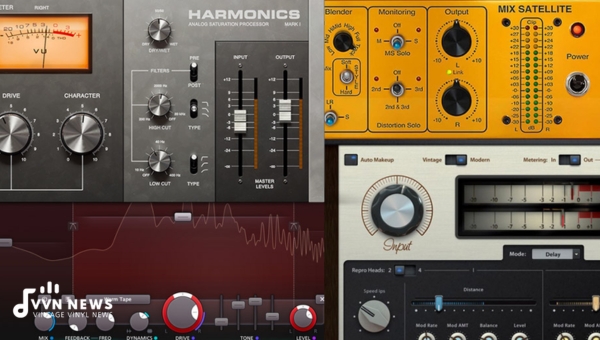
As we dive deeper into the world of tape saturation, it’s worth mentioning some of the leading saturation plugins that have captured my attention.
These tools can help you achieve a similar effect as analog tape machines but with the added benefits of digital precision.
Noteworthy plugin entries like Soundtoys Radiator, Soundtoys Decapitator, FabFilter Saturn 2, Sonnox Oxford Inflator and Klanghelm IVGI are real game-changers in this aspect.
Soundtoys Radiator
SoundToys Radiator is a dual-drive tube input channel and EQ emulation based on the classic Altec 1567A tube mixer from the ’60s and ’70s.
This famous piece of hardware is renowned for its saturation, warm distortion, high-quality sound, and boosting presence without adding any harshness to your audio.
Key Features of SoundToys Radiator
- The bass cuts at 800 Hz for a punchier tone.
- The treble control can boost your output at 10 kHz.
- Switch to mono mode easily for mono-processing tasks.
Soundtoys Decapitator
The SoundToys Decapitator is another impressive entry in our list.
It offers five different modes of distortion, letting you manually dial your desired intensity in or go all out with the exciting ‘punish’ feature.
Key Features of SoundToys Decapitator
- You can also blend it with your dry signal for parallel processing.
- It has an output gain control that matches volumes before and after processing.
- Offers a great range from subtle harmonic enrichment to full-on devastation.
Also Read: 10 Best Flutes For Beginners [Top Picks To Start Your Journey]
FabFilter Saturn 2
Then there’s FabFilter Saturn 2, perfect for mastering precise multi-band distortions, saturating effects or even creating revolutionary sounds from scratches due to its gripping setlist of controls.
Key Features of FabFilter Saturn 2
- Comes with a powerful modulation section and an elegant interactive multiband display.
- Provides you with up to six bands without compromising sound quality.
- It grants every band separate drive, mix, feedback, and dynamics controls while offering a wide range variety from tape/tube saturation to aggressive guitar amplifier hardware simulation.
Sonnox Oxford Inflator
Onwards to Sonnox Oxford Inflator. A unique plugin that delivers louder mixes without apparent clipping or compression – preserving all-important spectral integrity and dynamics while giving you maximum loudness simultaneously.
Key Features of Sonnox Oxford Inflator
- Works as an application-independent, hardware-agnostic virtual audio device that enables users regardless of their DAW software preference.
- Its band split option prevents artifacts by letting you process low-frequency content separately from your mids and highs.
Klanghelm IVGI
Last but not least is Klanghelm IVGI, a superbly detailed free saturation/distortion plugin.
It is capable of achieving a multitude of possibilities – from subtle warming effects up to sophisticated distortional textures on almost every type of source material, be-it drums or entire mixes!
Key Features of Klanghelm IVGI
- A responsive interface, irrespective of signal level adjustment, provides a broad range of dynamic scenarios handled effectively.
- Aligns asymmetric distortion/saturation responsive towards crest factor, making it behave much more like actual analog circuitry would.
Consider these options when looking for digital tools that emulate analog warmth; they pack quite a punch.
Also Read: Richest Rappers In The World [Discover Who Tops The List]
FAQs About Tape Saturation And Plugins
What is a tape saturation plugin?
A tape saturation plugin is a digital tool used in audio production to replicate the warm, vintage character of analog tapes.
What does tape saturation do?
Tape saturation adds harmonic distortion and compression to the sound, creating warmer and fuller tones. It often adds pleasing sonic characteristics, such as modest rounding-off of sharp transients.
How do you use a tape saturation plugin?
To use a tape saturation plugin, you first insert it into your audio channel or bus. Then, adjust the amount of “saturation” or “drive” per your taste. Remember to always listen in context with your mix for desired effect.
What is the best tape saturation plugin?
Determining the best tape saturation plugin largely depends on personal preferences but some standard favorites include options like Universal Audio Studer A800, Soundtoys Decapitator and Waves J37 Tape.
Should I use saturation on every track?
Saturation should not be used on every track as it can create a muddy mix when overused. Instead, it’s recommended to use it judiciously to selectively enhance specific elements in your mix.
Conclusion
Tape saturation is a fascinating link to our musical past. It is a phenomenon and creative tool rich in character, capable of adding warmth and cohesiveness to audio signals in music productions.
With a deeper understanding of what it encapsulates, you can begin to utilize the myriad of saturation plugins out there aiming to recreate this mesmerizing depth and sonic character digitally.
Each plugin comes with its distinctive features, ready to add its unique flavor to your mix.
Leveraging these tools effectively lies in understanding how they function and how best they can contribute towards achieving your distinctive sonic vision.
